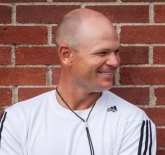Orthorexia Nervosa

Previously published in Volume 88, Issue 1
There is general thought among Canadians that any attempt at healthy eating and exercise are necessary and important factors to our physical and mental wellbeing. Today’s fitness culture often promotes a slender and aesthetic body as “proof” of conquering one’s health. These assumptions have come into question recently, especially when the lines between healthy and unhealthy eating and exercise behaviours begin to be blurred. An emerging eating disorder called orthorexia nervosa, which is associated with extreme health behaviors, is gaining increased attention in Canada and among other developed countries (Wiklund et al., 2017, Dunn & Bratman, 2015).
The overall prevalence of eating disorders among Canadians is increasing (National Initiative for Eating Disorders, 2019). Eating disorders are “a persistent disturbance of eating or eating-related behaviour that results in the altered consumption or absorption of food and that significantly impairs physical health or psychosocial functioning” (American Psychiatric Association, 2013, p. 329). Anorexia nervosa, bulimia nervosa, and binge eating are currently the most recognized eating disorders (APA, 2013). Reports by the National Initiative for Eating Disorders (2017) suggest that between 2% and 3%, or 725,800 to 1,088,700 of Canadians, will meet the diagnostic criteria for an eating disorder. These numbers should not be taken lightly given the devastating impact that eating disorders can have on an individual’s mental and physical health and an individual’s capacity to function in personal relationships and in current and future education opportunities. Another major concern is that eating disorders have the highest mortality rate of any mental illness, with 1,000 to 1,500 Canadians dying annually (LeBlanc, 2014).
Individuals at-risk of developing the eating disorder orthorexia nervosa have an unhealthy preoccupation with consuming strictly healthy food and become obsessed with eating only foods they deem to be ‘healthy’ and ‘pure’ in order to improve their health or performance (Bratman & Knight, 2000). Orthorexia, which literally means “correct appetite”, was first coined by Steven Bratman, a physician, who witnessed a number of his patients engaging in these types of behaviours. Other researchers highlight that these individuals take healthy eating to the extreme through their dietary practices, which can be tied to a moral value for food, self-discipline, and weight control (Musolino, Warin, Wade, & Gilchrist, 2015).

Orthorexia often begins innocently. Consider this example:
Jane is a junior high basketball athlete. She is looking for a way to improve her performance and takes advice from her coach. Taking her coach’s advice, Jane begins consuming protein shakes and eliminating foods high in fat and sugar. Jane notices increases in sport performance and also experiences increased energy and focus, due to her healthy food choices. Her coach also commended her on eating healthy and on her improved performance. Seeing the positive impact of her food choices led Jane to feel a greater desire to continue with this lifestyle choice. After several months of eliminating unhealthy food choices from her diet, Jane continued to become further consumed with buying, preparing, and consuming only food that would provide her body with the utmost nutrition possible. She often received compliments about her slim figure because her new diet resulted in significant weight loss. A year later, Jane began recognizing that she no longer spent time with her same group of friends because her friends did not value nutrition the same way that she did. In finding few that shared her beliefs, she was often alone and isolated finding lone solace in a social media community that understood. Strangely, Jane felt like a fraud because although she appeared healthy, she struggled internally with her internal thoughts, which told her that she was not eating healthy enough and that her lapses in her food choices were not restrictive enough. Jane feels defeated and ashamed when she brings up this information with her parents, because they minimize her insecurities and tell her that “it’s only food”.

Jane’s story is a close resemblance of how orthorexic behaviours could innocently start with an adolescent. Her desire was to maximize her health as well as to increase her performance. However, this desire over time led to an unhealthy preoccupation with food. Detection at an early stage can be difficult because she appears healthy and is simply trying to improve her performance.
Distinctive Features of Orthorexia Nervosa:
-
Affects both males and females
-
Emphasis and consumption of food(s) based on purity and impact on health
-
Consistency between self-image and body-image
-
Body image distortion around sense of physical “impurity” and health versus weight loss or appearance
-
Exaggerated faith that inclusion or elimination of particular kinds of food can prevent or cure disease or affect daily well-being
-
Dietary restrictions escalate over time, and may come to include elimination of entire food groups and more frequent “cleanses”, fasting, thought to be purifying or detoxifying
The school setting is a place where eating disorders, and specifically orthorexia nervosa, can often be first noticed and addressed. A teacher spends countless hours with their students over the course of the year and changes in such areas as behavior, physical appearance, and attitude are often easily noticed (Yager & O’Dea, 2005). Physical Education teachers are even more likely to detect an eating disorder because of the typical social interaction and active environment that usually occurs in the gym (O’Dea & Abraham, 2001). Topics like body image, nutrition, and exercise are commonly discussed and can lead to students sharing their personal views and behaviors.
Recognizing School-Related Risk Factors for Orthorexia:
- Adolescents who view health and fitness-related content on social media are more likely to have an eating disorder. Social media is closely tied with orthorexia and other eating disorders.
- Social media outlets such as Instagram can be a toxic place where females compare themselves to bikini models and males compare themselves to bodybuilders
- Adolescents may overuse social media to “flaunt” healthy eating and exercise regimens
- Excessive posting of photos and media exhibiting foods that are healthy and/or low-fat, low-carb, keto, raw food diet, etc.
- Adolescents may be at-risk due to involvement in sports and athletics
- There is a high prevalence rate with orthorexia among individuals who take an active interest in their health and body
- Teachers and coaches who play an active role in sports at school
- These role models are in a unique position and are often the first responders in identifying whether an athlete is displaying behaviours that would put them at-risk of developing orthorexia or other eating disorder behaviours
- The schools general culture of health
- The definition of health, healthy behaviour, and body ideals are changeable. Teachers play a major role in establishing what types of body types and health-related behaviours are acceptable at their school.
Physical education teachers often can observe extreme behavior because many spend countless hours in coaching or other after school settings. Furthermore, those outside of the PE setting expect physical educators to take a leading role in addressing health and wellness issues within a school (Yager & O’Dea, 2005). In coordination with school health professionals, the PE teacher often is a first responder in diagnosing and helping students in need.
One area of concern for health and physical education teachers is not being an expert in the area and knowing exactly what to do (Yager & O’Dea, 2005). Research suggests that this area is of particular interest among PE teachers although very few receive training and professional development (Yager & O’Dea, 2005).

Despite these barriers, simple strategies that health and physical education teachers can utilize on a day to day basis include:
-
Recognize and validate with students the significant role that social media plays in shaping female femininity and male masculinity.
-
Create forums, discussions, and bulletins that create awareness about the role of body image, nutrition, and exercise on students’ self-esteem and identity.
-
Take the lead in creating a culture of openness where disordered eating behaviours can be discussed between students and staff.
-
Do not assume that a student who looks “healthy and fit” is well. Students at-risk of orthorexia or another eating disorder may appear as put-together, strong, and healthy externally but be suffering internally.
-
Recognize that eating disorders are a mental condition that may require treatment and not just encouragement. Recognize your limitations and when your students require further assessment and mental health treatment from a professional.
-
Positive role modeling of acceptance of different body types and lifestyle choices. Orthorexia behaviours are prevalent among individuals who value a healthy body and lifestyle. Avoid unnecessary pressures to make your body look a certain way due to PE teacher stereotypes. It is equally important to show students that a balanced healthy lifestyle is ideal.
-
Creating safety nets. Creating social support between students, teachers, coaches, and parents to form ‘protection’ against the unhealthy and unrealistic approaches to exercise, diet and body ideals.
Adolescents today often find themselves navigating through a complex maze for social recognition and self-evaluation. In countries such as Canada, physical activity, dietary choices, and body ideals are often closely connected to how a young person evaluates his or her social status and value. Orthorexia nervosa, this fixation on extreme health practices, needs to be on the minds of anyone who works with our young people today. Teachers and coaches can play an integral role in creating an environment where these behaviours can be recognized, discussed, and hopefully prevented.
References
American Psychiatric Association. (2013). Diagnostic and statistical manual of mental disorders (5th ed.). Arlington, VA: Author.
Bratman, S., & Knight, D. (2000). Health Food Junkies: The Rise of Orthorexia Nervosa - the Health Food Eating Disorder. Broadway Books.
Dunn, T. M., & Bratman, S. (2015). On orthorexia nervosa: A review of the literature and proposed diagnostic criteria. Eating Behaviors, 21, 11–17.
Golden, N. H., Katzman, D. K., Kreipe, R. E., Stevens, S. L., Sawyer, S. M., Rees, J., … Society For Adolescent Medicine. (2003). Eating disorders in adolescents: Position paper of the Society for Adolescent Medicine. The Journal of Adolescent Health: Official Publication of the Society for Adolescent Medicine, 33(6), 496–503.
Håman, L., Lindgren, E.-C., & Prell, H. (2017). “If it’s not Iron it's Iron f*cking biggest Ironman”: personal trainers views on health norms, orthorexia and deviant behaviours. International Journal of Qualitative Studies on Health and Well-Being, 12(1), 1364602.
Keca, J., & Cook-Cottone, C. (2005). Eating Disorders: Prevention Is Worth Every Ounce. Counseling 101.
LeBlanc, H. (2014). Eating Disorders Among Girls and Women in Canada: Report of the standing committee on the status of women. 41st Parliament, Second Session.
Musolino, C., Warin, M., Wade, T., & Gilchrist, P. (2015). “Healthy anorexia”: The complexity of care in disordered eating. Social Science & Medicine, 139, 18–25.
C. Eating Disorders Information. Retrieved from www.nied.ca
O’Dea, J., & Abraham, S.F. (2001). Knowledge, beliefs, attitudes, and behaviors related to weight control, eating disorders, and body image in Australian trainee home economics and physical education teachers. Journal of Nutrition Education, 33, 332-340.
Turner, P.G. & Lefeure, C.E. (2017). Instagram use is linked to increased symptoms of orthorexia nervosa. Eating weight disorders, 22, 277-284.
Wiklund, E., Jonsson, E., Coe, A.-B., & Wiklund, M. (2017). “Strong is the new skinny”: navigating fitness hype among teenagers in northern Sweden. Sport, Education and Society, 1–14.
Yager, Z., & O’Dea, J. (2005). The role of teachers and other educators in the prevention of eating disorders and child obesity: What are the issues. Eating Disorders, 13:3, 261-278. DOI: 10.1080/10640260590932878








